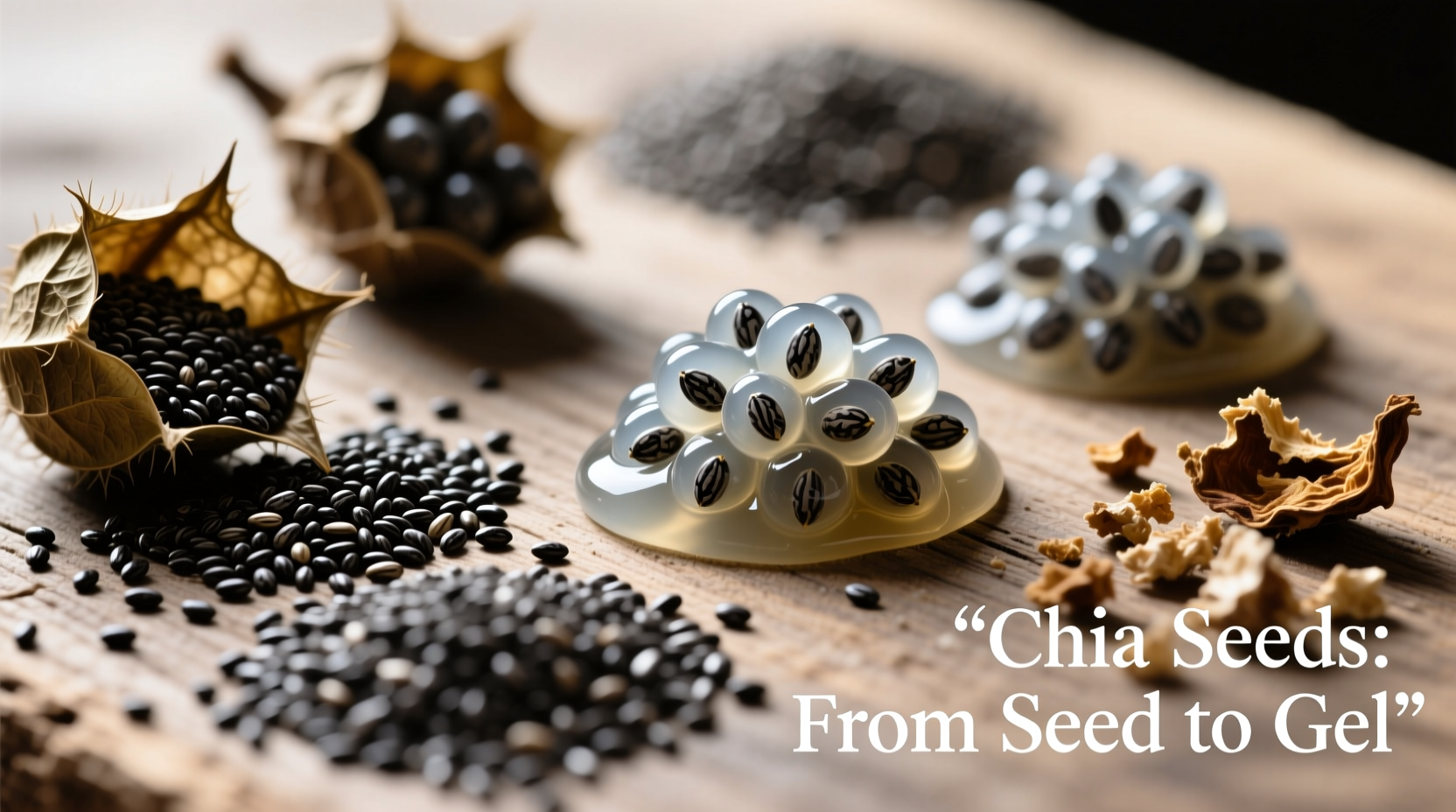The three most effective ways to eat chia seeds are: 1) Soaked in liquid to create chia pudding or gel (use 1:9 seed-to-liquid ratio), 2) Sprinkled whole on yogurt, salads, or oatmeal, and 3) Ground into flour for baking or smoothies. Soaking improves digestibility and nutrient absorption while preventing potential choking hazards.
Chia seeds transform from tiny, hard specks into a versatile superfood powerhouse when prepared correctly. With over 10 grams of fiber and 5 grams of plant-based omega-3s per ounce, these ancient Aztec energy boosters deserve proper preparation to maximize their nutritional benefits. This guide reveals exactly how to incorporate chia seeds into your daily routine with chef-tested techniques that optimize texture, flavor, and nutrient availability.
Mastering Chia Seed Preparation: A Step-by-Step Journey
Why Preparation Method Matters
Unlike flaxseeds, chia seeds don't require grinding to access their omega-3s—but proper preparation significantly enhances digestibility. Research from the National Institutes of Health confirms that hydrated chia seeds show 30% higher nutrient bioavailability compared to dry consumption. The gel-like coating formed during soaking also slows digestion, providing sustained energy release.
The Soaking Method: Unlocking Maximum Benefits
Soaking transforms chia seeds from crunchy to pleasantly gelatinous while activating their nutritional potential:
- Basic hydration: Combine 1 part chia seeds with 9 parts liquid (water, milk, or juice)
- Resting time: Stir after 5 minutes, then let sit 15-30 minutes at room temperature
- Texture check: Properly soaked seeds should have a uniform gel coating with no crunchy centers
- Refrigeration: Store soaked chia in airtight container for up to 5 days
This method creates the perfect base for chia pudding, smoothie thickeners, or egg substitutes in baking. Professional chefs like Antonio Rodriguez recommend adding a squeeze of lemon during soaking to prevent clumping while enhancing mineral absorption.
| Preparation Method | Nutrient Availability | Digestibility Score | Best Applications |
|---|---|---|---|
| Soaked (15+ min) | ★★★★★ | 9/10 | Puddings, beverages, egg substitute |
| Ground | ★★★★☆ | 8/10 | Baking, smoothies, sauces |
| Whole (dry) | ★★★☆☆ | 6/10 | Salads, yogurt toppings, bread coatings |
Using Whole Seeds: Texture Considerations
While convenient, dry chia seeds present some challenges. The FDA notes that consuming dry chia seeds without adequate fluids can cause esophageal constriction in rare cases. For safe dry consumption:
- Limited to 1 tablespoon maximum per serving
- Always pair with moist foods (yogurt, applesauce, smoothies)
- Avoid dry consumption for children under 5
- Never add dry seeds directly to thick smoothies—they'll absorb liquid and thicken unpredictably

Grinding for Culinary Integration
Grinding creates chia flour that seamlessly blends into recipes without altering texture:
- Use coffee grinder or high-speed blender for 30-60 seconds
- Grind immediately before use for maximum freshness (oxidizes quickly)
- Substitute 25% of regular flour with chia flour in baking recipes
- Add to meatloaf or veggie burgers as binder (replaces eggs)
Chef Antonio Rodriguez explains: "Ground chia integrates beautifully into sauces and dressings, adding thickness without altering flavor. I use it in vinaigrettes at a 1:4 ratio with mustard for perfect emulsification."
Meal-Specific Applications
Breakfast Boosters
- Overnight oats: Mix 2 tbsp chia seeds with 1 cup milk and ½ cup oats
- Smoothie thickener: Add 1 tbsp soaked chia to replace banana for lower sugar
- Breakfast pudding: Combine with coconut milk and top with berries
Lunch & Dinner Solutions
- Salad topper: Sprinkle dry seeds on finished salads for crunch
- Soup thickener: Stir in 1 tbsp ground chia to cream-based soups
- Meat binder: Replace eggs in meatloaf with chia gel (1 tbsp seeds + 3 tbsp water)
Beverage Innovations
The traditional Mexican chia fresca remains the gold standard for chia beverages. Combine 1 tbsp chia seeds with 1 cup water, 1 tbsp lime juice, and 1 tsp honey. Let sit 15 minutes with occasional stirring. The USDA Food and Nutrition Information Center confirms this preparation provides optimal hydration with sustained energy release.
Avoiding Common Mistakes
Even experienced users make these preparation errors:
- Insufficient liquid: Use minimum 9:1 liquid-to-seed ratio to prevent dangerous expansion in digestive tract
- Over-soaking: Beyond 24 hours creates overly slimy texture (though still safe)
- Dry consumption with inadequate fluids: Always drink 8+ ounces water when eating dry seeds
- Improper storage: Keep dry seeds in airtight container away from light (max 2 years)
Registered dietitians consistently warn that beginners often consume too much too quickly. Start with 1 tablespoon daily and gradually increase to the recommended 2 tablespoons to allow your digestive system to adjust to the high fiber content.
Practical Integration Timeline
Follow this progression for seamless chia seed adoption:
- Week 1: Add 1 tsp soaked chia to morning smoothie
- Week 2: Prepare simple chia pudding twice weekly
- Week 3: Substitute chia gel for eggs in one baking recipe
- Week 4: Experiment with savory applications like chia-crusted fish
This gradual approach prevents digestive discomfort while helping your palate adjust to chia's mild, nutty flavor. The CDC's dietary guidelines support this incremental fiber increase for optimal digestive adaptation.
Contextual Considerations
Not all chia preparation methods work equally well in every situation:
- For weight management: Soaked chia creates greater satiety than dry seeds
- For athletes: Chia fresca provides superior hydration to sports drinks
- For baking: Ground chia works better than whole seeds for even distribution
- For children: Always serve pre-soaked to prevent choking hazards
Understanding these context boundaries ensures you're using the right preparation method for your specific nutritional goals and circumstances.











 浙公网安备
33010002000092号
浙公网安备
33010002000092号 浙B2-20120091-4
浙B2-20120091-4